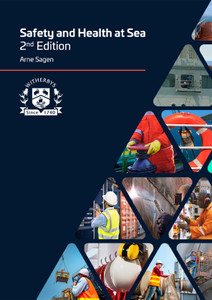
This publication from the North of England P&I Association highlights sections of the COLREGs that are often misinterpreted, focusing on 12 rules covering a range of hazardous situations. It identifies the key elements of each rule and provides guidance on correct application.
The International Regulations for Preventing Collisions at Sea 1972 (COLREGs) are fundamental to safe navigation and proper conduct of vessels, but are often found to have been breached in collision investigation.
This loss prevention guide has been designed for use on ships’ bridges and provides practical advice to watchkeepers on the key collision avoidance rules, as well as the influence of electronic aids to navigation. It may be used as a focus for discussion in bridge team meetings or onboard training sessions.
The guide also provides collision case studies and simple plotting sheets that may be used to illustrate developing situations while on watch.
Collisions are among the most high profile of all maritime accidents. The number of collisions and their cost, in personal and financial terms, has increased in recent years and ‘human error’ seems to be the only common factor.
THE COLREGs
Collisions should not happen but they do; sometimes with disastrous consequences. Proper application of the International Regulations for Preventing Collisions at Sea 1972 (COLREGs) by every watchkeeper on every vessel is the only way to reduce the risk of collision. Indeed, if the regulations are followed to the letter, then a collision should never occur.
Today’s watchkeeper is required to gather, understand and appraise information from a range of sources; from sophisticated radar, automatic radar plotting aids (ARPA), electronic chart display and information systems (ECDIS), automatic identification systems (AIS) and global positioning systems (GPS) to compass bearings, visual sightings and sound signals. This information is the starting point of a decision making process and the watchkeeper must then apply the COLREGs to the factual situation in order to identify the correct steps leading to the correct outcome.
IDENTIFYING RISK
The concept of the ‘risk of collision’ is a key feature of the COLREGs. The risk of collision must be identified, assessed and avoided at all times and this is the responsibility of every watchkeeping officer on every vessel.
The best lesson you can learn from this guide is to acknowledge the watchkeeper’s responsibility to identify a ‘risk of collision’ and to take all necessary steps to avoid or minimise that risk.
The aim of this guide is to deliver that message by encouraging discussion between all watchkeepers, from cadets to masters and inspecting officers. We learn best from our experience and from the experience of the people around us, and there is no better way of understanding COLREGs than through discussion, whether in bridge team meetings, at onboard training sessions, during a quiet watch or in the mess room.
KEY RULES
This is not a textbook on the COLREGs. Rather, it is a focus for discussion of those regulations that we at North believe are the key to collision avoidance and which we see breached time and again when collisions occur. We think the rules that are discussed in this guide are the ones that are most often misinterpreted and misapplied. We hope that this guide will demonstrate how these rules fit together and how the interpretation and application of each of them can be influenced, sometimes wrongly, by the vast mass of information now available from electronic aids to navigation.
At the end of the guide are collision case studies and simple plotting sheets that you can use to illustrate developing situations. We hope that the case studies and the questions they ask will be the starting point for wide ranging discussions on all aspects of collision avoidance.
THE RULES
Rule 2: Responsibility
Rule 5: Look-out
Rule 6: Safe speed
Rule 7: Risk of collision
Rule 8: Action to avoid collision
Rule 10: Traffic separation schemes
Rule 13: Overtaking
Rule 14: Head-on situation
Rule 15: Crossing situation
Rule 16: Action by give-way vessel
Rule 17: Action by stand-on vessel
Rule 19: Conduct of vessels in restricted visibility
CASE STUDIES
Introduction
Case Study 1. Who started this?
Case Study 2. Is it good to talk?
Case Study 3. What were they thinking?
Case Study 4. Watch out astern
Case Study 5. To cross or not to cross?
Case Study 6. Fishing?
PLOTTING SHEETS
Plotting Sheet 1. Open sea
Plotting Sheet 2. Traffic separation scheme
Plotting Sheet 3. Coastal waters
NorthStandard is one of the leading providers of global marine insurance products and services across the maritime industries. Established through the merger of North P&I Club and the Standard Club in February 2023, NorthStandard brings together over 300 years of marine insurance heritage.
From headquarters in the UK and with offices throughout Europe, Asia and the Americas, NorthStandard offers a unique blend of worldwide presence and class-leading expertise across multiple specialist areas, including P&I, FD&D, War Risks, Strike & Delay, Hull and Machinery and ancillary insurance. Its Sunderland Marine and Coastal & Inland divisions also provide cover for owners’ fixed premium P&I, fishing vessels, inland waterway and coastal trading vessels and aquaculture. NorthStandard’s comprehensive local market and sector knowledge is underpinned by continuous investments in market-leading digital technologies.
NorthStandard is a leading member of the International Group of P&I Clubs (IG) and is fully committed to upholding the shared objectives of its 12 independent member clubs, which provide liability cover for approximately 90% of the world’s ocean-going tonnage.
- Number of Pages:
- 44
- ISBN:
- 9780955825798
- Binding Format:
- ringbound
- Book Height:
- 248 mm
- Book Width:
- 180 mm
- Weight:
- 0.9 kg
- Author:
NorthStandard
- Preview:
- Yes
- Published Date:
- August 2019
 Witherbys.com
Witherbys.com




